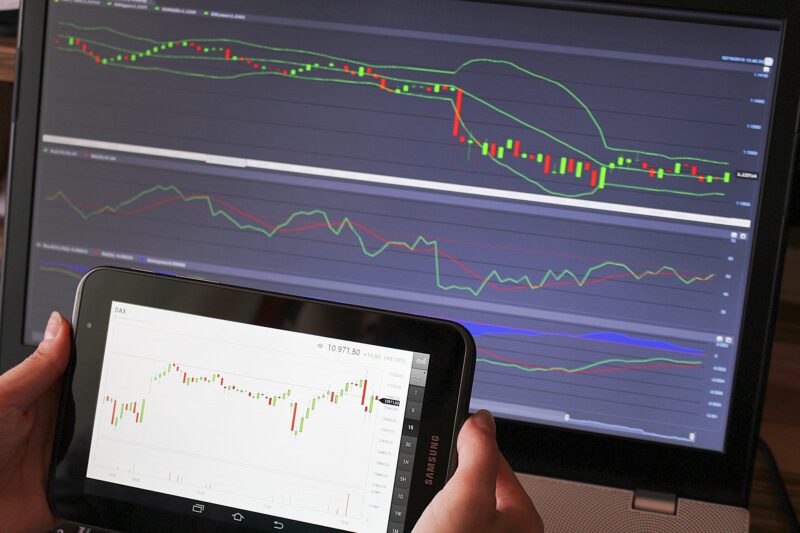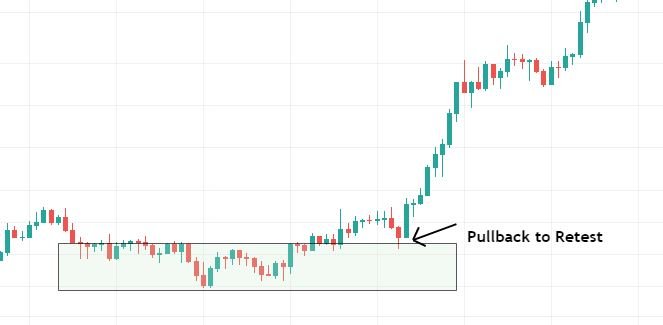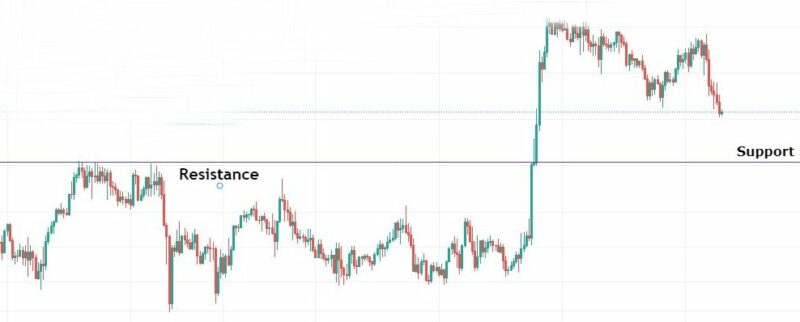
If you have little time but want to learn how to trade stocks in less than two hours a day, this guide is for you. You may already be trading stocks, but how practical is it to compress your trading hours and still achieve success?
Depending on your experience of trading stocks, it’s easy to feel overwhelmed.
How do you know what stocks to choose and how to manage open trades?
This guide will set out a simple plan for trading stocks in two hours or less. I’ll highlight suggestions for a trading plan and a few simple strategies to help you get started.
How Much Can Day Traders Make?
Successful day traders can make a good living from day trading stocks, and, in truth, the less time spent at the charts, the more chance you have of making better trading decisions.
As a beginner, it’s more important to develop your day trading skills than it is to focus on making money.
But naturally, you’d like some guidelines for what sort of income is possible from day trading stocks with limited time. So, here goes.
How much money you make from day trading stocks depends on your trading capital and your win rate. If you only have 1000 Euro, GBP or dollars to use for trading stocks, with a 10% monthly gain, it’s a lot of effort for a small return, and you have to pay commissions on stock trades.
Realistically, it’s better to start day trading with a minimum of 5,000 to 10,000 Euro, GBP or dollars to maximize returns. Initially, you aim to build up your trading capital before you begin making withdrawals.
Not everyone has a spare 10,000 Euro, GBP or dollars to put into a trading account. Don’t despair if you have limited funds. You can still make it work. It may just take longer.
Compounding your profits can help to grow your account surprisingly quickly.
It’s essential to hink long-term and percentages, rather than monetary gain.
Earning 100 Euro, GBP or dollars a month may not seem a lot, but a 10% a month return way is better than what a traditional bank can offer (as I write this, we’re at close to 0% interest rates and in some countries even negative rates).
Professional day traders take time to build up their working capital and, all the while, sticking to low-risk trades such as 1%. Imagine, in a few years, building your day trading account to 50k Euro, GBP or dollars and taking a 5,000 Euro, GBP or dollars a month return.
Some day traders currently have a working capital of 100k or more. But, they may have started like you, with no experience and minimum capital.
How to Day Trade Stocks for Profit
Day trading stocks is not easy. If anyone told you that it’s a great way to get rich quickly, they were lying or misinformed. Like most other ways of making money, this is real work that can also be taxing psychologically.
There is a high failure rate for traders, and many give up, lose their capital or realize that they can’t face the stress of day trading stocks. To become successful at trading stocks, it’s a long-term apprenticeship. There is so much to learn, and you will undoubtedly make many mistakes in the beginning. And that’s OK. It’s normal for all novice traders.
Traders fail because they expect fast returns without putting in the work. If you speak to professional day traders, they tell stories of their initial failure. Their first few months, or, in many cases, years, may have been spectacularly bad with significant losses.
Success in day trading stocks is a mindset shift. You stand far more chance of figuring out how to stay in the game if you lower your expectation of great riches and commit to becoming a better trader instead.
Trading stocks may seem simple. The price goes up, or it goes down, with a 50% chance of being right. How can that be so difficult?
Well, to trade for two hours or less, there’s a lot of work to be done to get to that stage. You have to learn how to analyse stock price charts and select stocks with good liquidity and volume.
You’ve probably heard the expression, fail to plan and plan to fail. Day trading stocks without a plan is a short route to nowhere.
A trading plan helps you to set rules and guidelines for your trades. A plan makes it easier to identify potential trades. You know when to enter and exit a trade and how to manage your emotions.
A trading plan is unique to you, but the below guidelines will help get you started –
- What time of day to trade stocks – set aside a specific time each day and stick with it. This practice creates mental discipline, and you learn how the stock market reacts at that time each day.
- Select stocks to day trade – choose stocks with high liquidity and volume and always check the order flow. You need price movement to make profits.
- Your chosen day trading strategies – backtest two or three strategies for different market conditions.
- How much money to risk per trade – professional stock traders suggest risking no more than 1% of your capital balance on each trade. You’d have to lose 100 consecutive trades to wipe out your account.
- Your maximum loss before you walk away for the day – every trader has losing runs. Novice traders may become frustrated and start chasing losses. They feel the market is against them and start revenge trading, which almost always creates more losses. Walk away if you have, say, three consecutive losses. Assess what went wrong and reevaluate for the following days trading
Without a trading plan, your results from day trading stocks will be hit and miss. If you are a beginner at trading stocks, it may take you a while to formulate your plan.
Experience teaches you what you need to do and not do. Allow at least six months of daily practice, ideally with a stock simulator account, so you aren’t risking real money until you have a solid trading plan and your wins are returning more than your losses.
Day trading stocks is not gambling. You are a professional, using your trading skills.
Approach your trading like a business. Put in the time and effort to improve your skills. Focus on the potential loss of a trade rather than how much profit you can make. Professional stock traders say that day trading success comes from the trades you don’t take more than the trades you take.
Reducing potential losses sets you apart from the failing traders.
Best Times to Day Trade the Stock Market
The stock market opens at 8:00 AM GMT and closes at 4:30 PM GMT.
The first hour of the stock market opening is an ideal time to trade. During the opening hour, many thousands of traders are buying and selling, and liquidity is good. It’s the time when price movement may be at its best.
By the middle of the trading session, liquidity slows down, and you may find yourself unable to exit a trade for a profit.
A big benefit of trading in the morning is that you have the rest of the day free.
The closing hour of the stock market can also be profitable as other traders are selling their stock, or swing traders may be buying stocks to hold overnight.
Research and observation play a crucial part in stock trading. Like any business, preparation is the foundation for success. Before the market opens, gather a list of potential stocks. You have two hours to trade, so this is your most important step.
You will have done your checks on company history and recent or upcoming news and looked at the chart for each stock to see if the price is trending or stuck in a range. Either one offers an opportunity for a trade. The price may continue in a trend after a pullback. Or, there could be a range breakout, which can be a great opportunity for a trend continuation trade.
These pre-trading checks may take 30-60 minutes. With experience, you will become quicker at spotting essential details. In time, you can make this daily practice a part of your two-hour trading window.
You may notice that, after two hours of trading, your concentration lapses. Don’t try and push through. Either take a break or finish trading for the day.
How to Find Stocks to Day Trade
With thousands of stocks available, it’s good to have a plan for how to select the stocks you want to trade –
- Run a stock screener – look for high liquidity, established stocks with volume. Look for order flow. These stocks have far more chance of daily price fluctuations for you to take your gains.
- Find stocks with clear direction – all stocks go through stages of consolidation, which can indicate a temporary pause before the price continues in the original direction. Look for a break of support or resistance or a retest of a breakout zone.
- Trade the same stocks – when you become familiar with a few stocks, you learn their patterns and behaviours. A quick check every day, and you know if you have a potential trade. It saves a lot of time to work with the same stocks.
Do I Need to Watch the News Before or During the Trading Day?
It isn’t necessary to watch the business news channels. Conflicting opinions on stocks can cause doubt in your mind or lead to impulsive trading.
Economic news is more important for the day trader. When a country releases high-impact financial information, such as unemployment data or budget changes, it can impact the price of market shares, causing volatility.
To avoid being caught in a trade reacting to news volatility, check an online economic calendar for upcoming high-impact, red news.
Some day traders actively look for trade opportunities around news releases, but it takes a high skill level to assess how prices may be affected. It’s a strategy not ideally suited to beginner day traders.
So, let’s take a look at some simple strategies for day trading stocks.
Five Strategies for Day Trading Stocks
1. Breakout Trading
Breakout trading is a popular strategy for day traders. The concept is simple and best explained with an image.
 In the image above, the price has consolidated in a small range for a while.
In the image above, the price has consolidated in a small range for a while.
Drawing the box on the chart made it easier to identify the range. You see the first break out of the box (resistance) – this is the spot where you watch and wait.
Then the price returned to retest the box – which has now become support. A big, green candle followed, which, on the close, is an excellent place to enter the trade.
To exit the trade, you look left on the chart to assess historical resistance zones. On the image, there is another small range above the breakout. For the day trader, that zone would be a good exit point.
2. Scalping
Scalping is ideal for day traders planning to spend no more than two hours a day trading stocks.
Scalping is a popular quantity focused strategy, but scalping doesn’t suit everyone. It takes intense concentration, and because you take multiple trades for a small profit, it can be stressful.
Scalping takes advantage of small intraday fluctuations in price, exiting the trade when the price slows down. Then the trader looks for another trade.
If you are working with a chart, scalping is best suited to a 5-minute or 15-minute timeframe. Some day traders use the 1-minute chart, but that is super-fast and can be hard to read unless you have assessed the higher timeframes for overall trend direction.
3. Momentum Trading
Some day traders use economic news to execute the momentum trading strategy.
The idea is to find stocks with high volatility, enter the trade and follow the price movement. You then exit the trade as the price peaks, losing momentum.
After high-impact news, it’s common to see rapid momentum on the charts. You can take advantage of that for a quick profit.
The United States Non-Farm Payroll (NFP), for instance, on the first Friday of the month, can impact individual stocks such as indices that show the price movement of the stock market as a whole.
It may take a few times before you figure out where you can take advantage of NFP, but with experience, it can be profitable for day trading stocks.
4. Price Action
Many day traders use price action for trading stocks because the price always tells a story.
Get into the habit of analysing a buy and a sell for each stock to prevent confirmation bias. The best day traders aren’t attached to their decisions or opinions. They trade what they see on the charts. If a chart shows that the price could go either way, move on to another stock.
Reading price action is a learned skill. Here are the top 3 tips for spotting a good entry point for a price action trade –
- Look for momentum – when liquidity and volume are high, the price gathers speed. You can ride your trade on the back of price momentum until it stalls or slows down.
- Wait for slow, choppy pullbacks – if the price makes rapid momentum but then drops back equally as quick, this shows uncertainty in market sentiment. Any trade you take in these market conditions may be a gamble. But, if the pullback is hesitant and slow, this indicates weighted sentiment in one direction. For instance, if a stock rose quickly from £10 to £12 but then crashed back to £10, it is likely to be a false breakout. But if the price moves back choppily and doesn’t return to £10, the probability is reasonable that the price is likely to keep moving upwards. Look at the chart patterns and ask yourself if buying pressure is stronger than selling pressure.
- Wait for the price to consolidate – when a stock price has made a strong move, it will always consolidate. The price may move in a small range for a while until it makes a breakout. When it does, wait for a retest and a positive sign for directional bias.
 The above image shows the price stuck in a choppy range at the bottom. It pushes up to resistance several times. For a while, it fails to make new highs, but the price finally breaks through. Now, resistance may become support. If the price hits the support line and bounces off, it could be a good entry trade.
The above image shows the price stuck in a choppy range at the bottom. It pushes up to resistance several times. For a while, it fails to make new highs, but the price finally breaks through. Now, resistance may become support. If the price hits the support line and bounces off, it could be a good entry trade.
5. Trend Trading
When a stock isn’t consolidating, the theory is that it’s trending. Trend trading is a popular strategy for day traders.
There are two ways of approaching trend trading
a) Follow the trend – wait for pullbacks and enter a trade in the trend direction. Exit the trade when the price slows down or stalls
b) Look for trend reversals – it can be tricky to spot a trend reversal. Sometimes pullbacks can extend to previous price points, looking as if the price is reversing. But, this is often not the case. It can simply be a more significant pullback. But, if you catch a long-term reversal, the rewards can be substantial, and you can start looking for further pullbacks in the new trend
There are potentially hundreds of different strategies for day trading. The above five examples are ideally suited to trading stocks in two hours or less.
Master price action and any strategy you choose will be more effective. It’s a bit like being able to read a map to find your way to a chosen destination.
Placing Live Day Trading Orders for Stocks
Before you start trading stocks live, you will have spent significant time practising and perfecting your skills. You have confidently built up your practice account and understand every aspect of how to day trade stocks.
Before trading stocks live, you need to know the following –
- How to find stocks with liquidity and volume – you can use a stock screener and set parameters
- Where to take an entry for a stock – wait for a clear signal for a buy or a sell
- How much commission fees you pay on a trade – trading fees can add up and wipe out your profits
- The exact amount of loss if the trade doesn’t work out – calculate this cost first before working out the profitability of a trade
- Risk to Reward Ratio (RTR) – avoid a 1 to 1 RTR. With a modest 50% win ratio, it will be hard to stay ahead. Aim for a minimum 2 to 1 RTR
- Where to place your stop loss – if you choose trades with high probability, your stop loss can be comparatively small.
- Risk Management – stick to 1% risk per trade. That way, you would have to lose 100 consecutive trades before you wiped out your account
- How to place a market order – you set a market order to close your trade. If you bought 100 shares, you place a live market order for 100 shares to sell at your target price
- The trade target – identify support or resistance areas on the chart and place your trade target before that zone
- An exit plan for unplanned market events– Life happens. With the announcement of the first Covid-19 lockdown, the stock market had a bit of a wobble. Professional traders may have identified the potential for trouble at the first mention of Covid and remained vigilant at managing trades. If you have any doubts, don’t delay. Get out of a trade as quickly as possible with the least damage to your trading account
Conclusion
Trading is subjective. Each trader has a unique perspective on day trading stocks. But, the overriding consensus is that liquidity and volume are the main criteria for choosing stocks to trade.
Day trading is not easy and, to do it in two hours or less takes extra skill and mental prowess. The speed of your reactions is as vital as your ability to read the market. Hesitation when executing a trade can lead to withering profits. Lagging decisions when exiting a trade can lead to rapid losses.
It’s essential to spend time practising to the level where you know you can pull the trigger on day trading stocks with some accuracy and skill.
It may seem frustrating to spend months trading with a demo account, but ultimately, that time will reap the rewards when you start live day trading stocks.
Before leaping into day trading stocks live, under-estimate your skill level and be prepared to take a step backwards if things go a bit wrong.
Practice trading with different shares until you find your favourites. Then get to know them closely. Familiarity makes it easier to understand stock price patterns and reactions to world news and company announcements.
Accept that small gains lead to consistent growth. If possible, spread your risks rather than putting a weighted amount into one stock. You may occasionally have a few days where it seems like you can’t get it right but stick with it.
Assess your wins and your losses. Sometimes, a win isn’t always a good trade, and a loss may not necessarily be a poor trade.
It is possible to day trade stocks in less than two hours a day. Many traders are doing it successfully. It takes time, a lot of practice and determination to keep going even if you make many mistakes.
Keep your risk management under control and think of every trade as a learning experience.
Please note that the above information is not providing advice on tax, investment, or financial services. The above information is provided without consideration for risk tolerance and a specific investor’s financial circumstances.
Trading or investing in financial instruments such as stocks & ETFs may not be suitable for all investors. It does involve risk and the possibility of a loss of capital.

Leave a Reply